The Dead Space series was riding high after the release of Dead Space 2 in 2011, having become one of the most highly-rated horror series of all time. Even today, people still praise Dead Space 2 as an incredible horror game. Unfortunately, Dead Space 3 was poorly received. What happened? How did Dead Space go from hero to zero?
When it launched in 2008 alongside Mirror’s Edge, Dead Space was part of an incredible one-two offering of original games from EA. It was cut from the cloth of System Shock 2, the sci-fi horror adventure that inspired some of the industry’s greatest games, including Portal and Bioshock. Dead Space looked great, played better, and went on to become one of the best horror games of the seventh generation of consoles. Development studio Visceral and EA followed with Dead Space 2, which was, in many ways, the perfect sequel.
The Possibility Of The Perfect Sequel
Alright, what’s a perfect sequel? What determines whether or not a sequel is any good? Judging by the response most audiences have, it’s “more of the same, but different.”
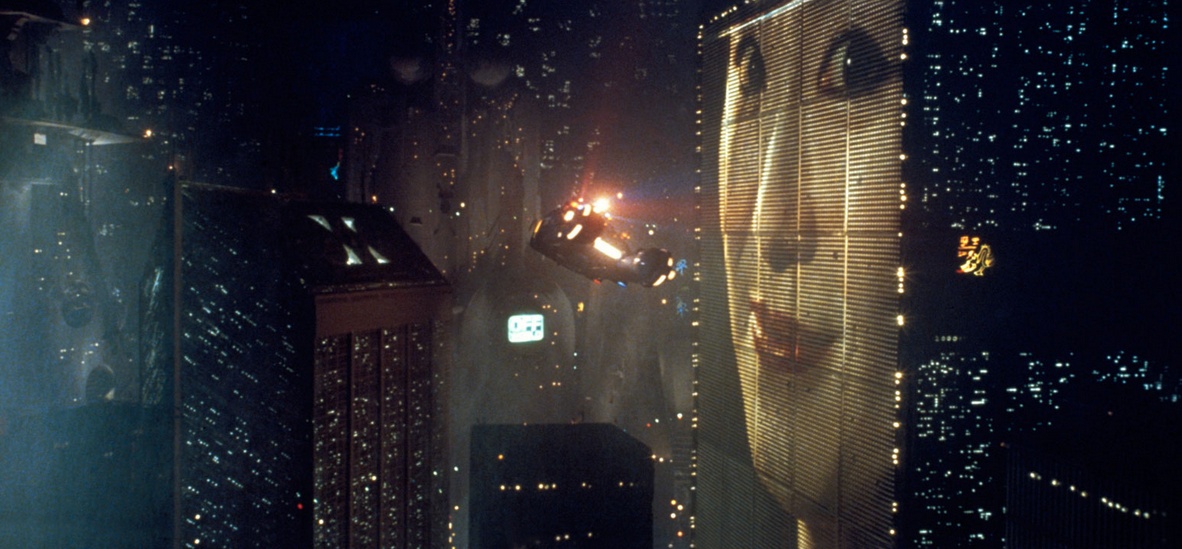
When we watch, say, Blade Runner, we start building emotional connections. That deep blue lighting means something, as does the rain, the neon, Vangelis’ music, the performances, the sound, the lenses, the atmosphere, everything. The entire movie is a synthesis of light and sound that affects our brains in a very particular way, and that’s true of all art we consume. Everything has a unique emotional identity attached to it.
The problem with watching Blade Runner a second time is that our experience has changed. We know what’s coming next. We know how it works, how it ends. We’re not watching it for the first time again. We want a sequel to Blade Runner to be the same because we liked the movie, but we want it to be different enough that it feels just as fresh and new as Blade Runner did on our first viewing.
A good sequel is the same, because it’s still attached to the identity of the series, but it’s different, because we’re discovering it for the first time.
That’s a hard balance hard to pull off well, but Visceral managed it beautifully.
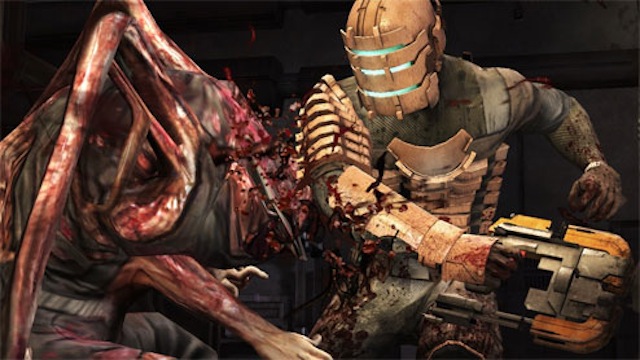
Dead Spacewas a tense horror game with fairly good combat and variety. Dead Space 2 tightened its predecessor’s pacing while broadening its scope. The gaps the original had in enemy diversity were filled with terrifying new enemies. Jump scares took a backseat to lengthier moments of tension, but those few “gotcha” moments that remained were some of the best in the game. Firefights felt robust and meaty. The story’s structure and characters were more memorable.
What A Dead Space Actually Is
So, before we can talk about what Dead Space 3 isn’t, we need to identify what Dead Space, in general, is. On the surface, that seems simple: third-person horror game with an emphasis on cutting off monster limbs. The only problem is, Dead Space Extractionis a fun first-person rail shooter. So, right away, we see that despite a change from third to first person perspective, Dead Space is still Dead Space. Additionally, plenty of people have made horror games where you cut off monster limbs. Dead Island‘s tropical zombie dismemberment comes to mind, but can you really imagine Isaac Clarke clomping around a South Pacific vacation resort in those big engineering boots of his?
In other words, “a third person horror game with an emphasis on cutting off monster limbs” isn’t an accurate description.
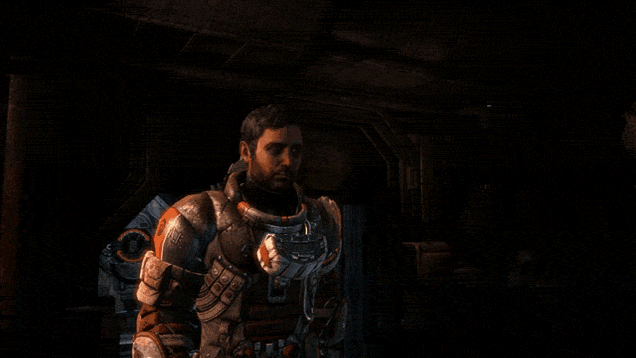
In film, a story is told through a series of images and sounds edited together to create meaning. In a novel, a story is told through the placement of words on a page. Theatre is the live performance of a story, a sort of happening that takes place in the now. Every medium speaks its own unique language: in games, or at least 3D games, stories are told through interaction with a virtual environment. While games often use film techniques for their cutscenes, the unique strength of the medium is found in gameplay.
The language of video games as a medium is gameplay. What is gameplay? It’s the way in which you interact with the game space. Gameplay is the decisions you make, the actions you take, and how these things play out. No other artistic medium speaks this language.
If every medium speaks in a unique language, then every work of art in that medium speaks its own dialect. Blade Runner‘s essence is its dialect — it looks, sounds, and feels different than, say, The Wizard of Oz or Caddyshack. The perfect sequel is one that speaks the language and maintains the dialect, but adds enough to the vocabulary to keep things fresh.
Dead Space‘s dialect is unlike any other game out there. It’s the quiddity of Dead Space — the thing that makes it what it is. But what defines that dialect?

Right off the bat, Dead Space creates these places you’re in that are often huge. The sense of scale in the game is breathtaking, yet it’s used to make the player feel claustrophobic. Players feel dwarfed in comparison to the vast spaces and gigantic monsters within. Couple that with limited resources, and players feel particularly small and powerless.
The environment is industrial and full of artwork that’s heavily-inspired by 40s-era propaganda pieces. Isaac wears big, clompy boots that slow and solidify his movement. Battles are tense because of the limb-severing required to slow enemies. Then there’s sound. Chances are, if someone put a blindfold on you and said “guess which game you’re listening to,” you’d pick out Dead Space every time.
Few games have sound design as unique and brilliant as Dead Space‘s. Everything works together to establish this very cohesive universe, from the sound items make when they are in range of your heads up display to the guttural screech and groan of the necromorphs to the bleeps and blips of the world’s various interfaces. Play Dead Space 2 and you’ll get the same strong aural identity. Play Dead Space mobile, Extraction, or Ignition and it’s the same thing.
The game’s feel is important too: Dead Space makes you feel like a tank without giving you the horrible tank controls traditionally associated with horror games. Instead of feeling like you’re stumbling around in a bad dream, you’re very much in control, but you’re no ninja — you’ve got a feeling of weight and mass. The level design complements this, restricting movement without feeling artificial and draconian.
Limb-severing is of vital importance as well, but not simply as a cool feature. Dead Space features enemies that charge to attack you. Unlike those types of enemies in traditional shooters, body shots aren’t enough to kill them. Much like Alan Wake‘s flashlight-weak enemies or Halo‘s Hunters, Dead Space features combat that is about managing threats rather than pointing at enemies with a gun and clicking until they die. You cut off a monster’s legs or use stasis to slow it down. The force gun pushes them back. It’s all about enemy management rather than wholesale enemy destruction. So you chop off limbs, sure, but chopping off limbs in Dead Space serves a purpose specific to the series.
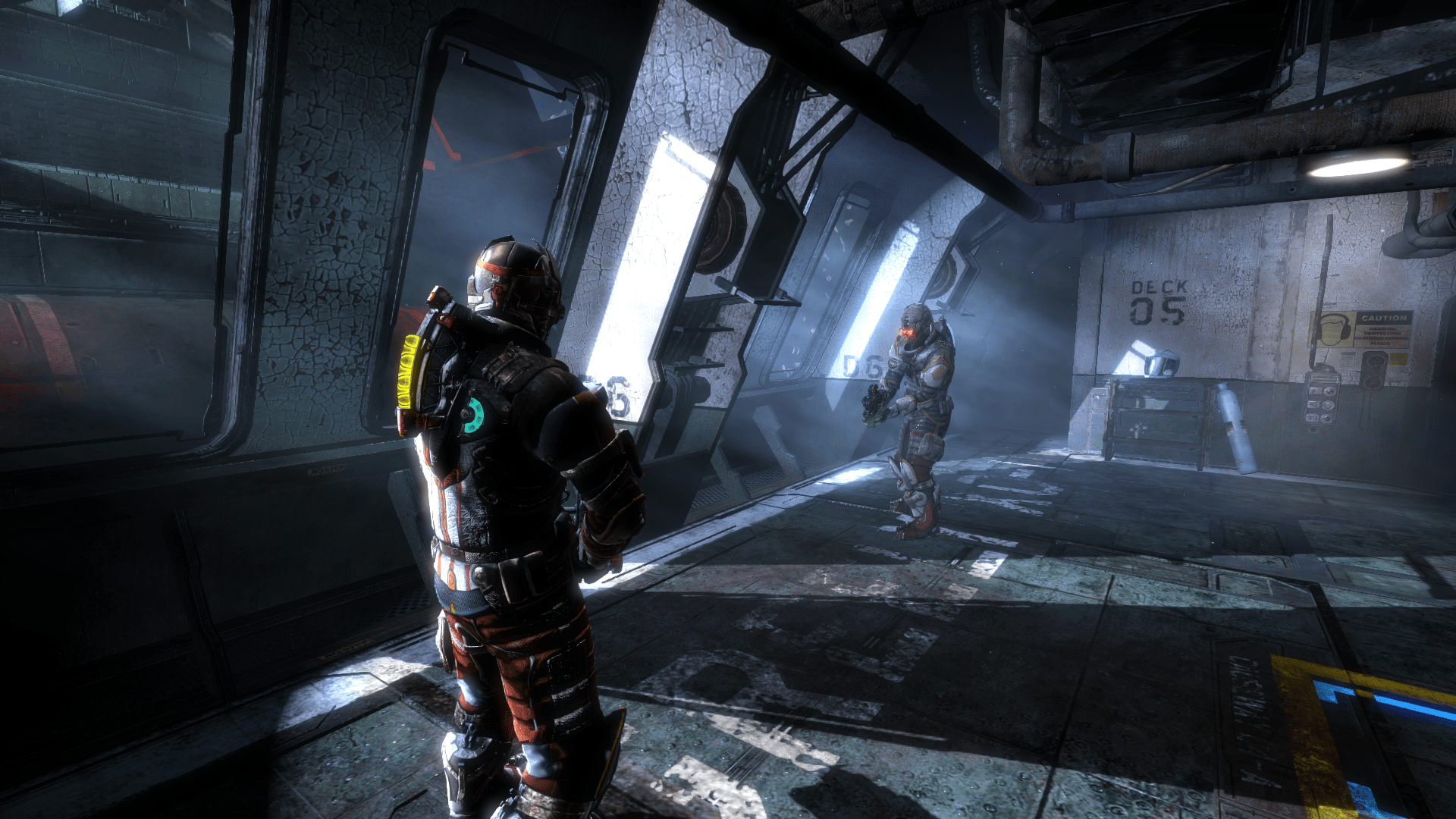
Then there’s the very heart of Dead Space: its inventory. Most people probably don’t think about how inventories influence your emotional state while playing a game, but they do. Being weaponless or using a one-hit kill health system in a horror game is all well and good, but it leads to a flat, binary experience. Either you’re hiding or you’re dying.
Once a developer adds a system that emphasises rationing health, players become more worried. There’s an added fear that running low on health packs means you might die. Now throw in weapons: sure, you can fight back against your foes, but what if you’re running low on ammo for your fully-upgraded plasma cutter? What if you’re about to face a boss, and the only gun you have is a dinky little flamethrower you haven’t paid much attention to? What if you don’t have enough ammo to kill your enemies? What if your gun won’t keep them at range? What if you can’t manage them? These are new complications to think about — more stuff to manage.
The more you manage, the less certain you feel, and the more terror the game provides.
Or, to put it another way: horror games are about uncertainty. Certainty breeds confidence, and horror is about the lack thereof.
Weaponless horror games don’t scare me; more often than not, I find myself getting bored. Throw in some guns while keeping ammo nice and scarce, however, and you’ve got the makings of a terrifying experience. Blood, spooky sounds, and sanity systems are great, but nothing makes me feel more vulnerable than an inventory system. It’s why System Shock 2 was one of the greatest horror games of all time, and it’s why both Dead Space and Dead Space 2 are equally terrifying.
All these little tensions we’ve been talking about work together in just such a way to give us this unique thing that is Dead Space. It’s this specific combination of aesthetic elements that produces the series’ unique dialect. No other game speaks to us in exactly this way. But, lest we forget, a perfect sequel is the same but different. In other words, a sequel speaks the same dialect, but it’s got a larger vocabulary. Dead Space 3 offers many new contributions to the series’ vocabulary, but before it came out, I worried that they might be changes to its dialect as well.
Fortunately, I was wrong, and many of these ideas actually enhanced the game.
The Differences of Dead Space 3
As mentioned earlier, using large spaces and limited resources to create a sense of claustrophobia is a defining element of the series. Dead Space 3 builds upon this by giving the player vast areas of space and a constant scramble for oxygen.
When the player finally lands on the planet, many of the spaces still feel huge, but this time, it is cold, instead of oxygen, that threatens to kill the player. Functionally, little has changed: the player must still cross large expanses while tending to a dwindling resources. Aesthetically, the vast blackness of space has been traded for the crushing whiteness of a snowstorm. It’s a fantastic way to add vocabulary to Dead Space‘s dialect.
The game also adds human enemies which, much to my surprise, don’t detract from the experience. Fighting necromorphs still involves running around and managing enemies. Fighting humans involves sticking to cover and shooting stuff. It’s not the best cover-based shooter system in the world — that’s still Gears of War 3 — but it’s a neat way to spice up the necromorph combat.
The only frustration comes from encountering the necromorphs and humans simultaneously, because players aren’t sure whether to stick in cover or to leave it. This can lead to more deaths and hurts the pacing. It’s an inoffensive issue — one that stumbles occasionally, but offers more variety to the series. With better polish, it could have been great, because the idea isn’t inherently bad.

Co-op further enhances the game. Dead Space 2, the best-received entry in the series, frequently features encounters with other friendly humans. Having a player-controlled human isn’t that big of a problem. While the vulnerability of loneliness is a vital element to any good horror game, Dead Space plays with an unreliable narrator element. The two co-op players see two different things, influencing how they play and interact with each other. While hanging around with a person can make things less scary, Dead Space 3 manages it well.
So, if all this stuff is good, or at least not bad, what hurt Dead Space 3?
The Problem Of The Perfect Gun
Remember when I said that inventory management is quite possibly the most important element in a horror game? Dead Space 3 disregards this entirely. Sure, you still have an inventory system, but it doesn’t matter anymore. The crafting system kills it.
Actually, this is the entire problem with Dead Space 3.
This is where the dialect changes.
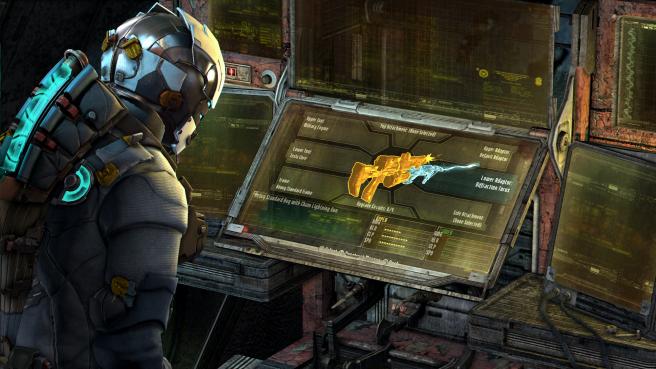
On the surface, crafting systems seem cool, because they appeal to everyone’s inner tinkerer. We get to be creative! Dead Space 3 drops various weapon parts, which players can then take to a crafting table where they can build all sorts of wild and wacky weapons.
Instead of having a gun that just cuts off monster limbs or a gun that just sets things on fire, we can make a gun that slices off limbs and melts them with acid, or we can create something that knocks back anything that comes our way before setting them on fire. If you can imagine it, you can probably build it, which would be great… if it didn’t completely kill the inventory management aspect of the game.
In previous games in the series, each gun has a specific purpose. Flamethrowers are great for tiny enemies, line guns are awesome for crowd control, and the pulse rifle is awesome for use against bosses. Unfortunately, flamethrowers aren’t so great at bosses, line guns aren’t that useful against tiny enemies, and the pulse rifle’s mediocre when it comes to crowd control. If you run out of ammunition for the flamethrower, you’ll need to use less efficient guns to solve your problems.
We have two different necessities at play here: first, players are weighing the differences between guns and selecting which to use at any given moment. Second, players are searching for ammo and managing what they have.
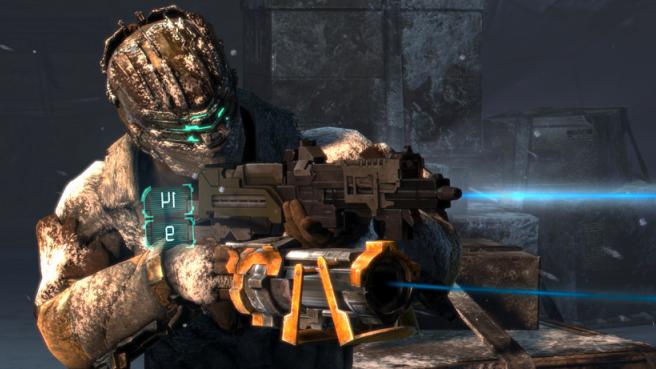
The problem with Dead Space‘s crafting system is that it lets you build the “perfect gun,” something that has no weaknesses and lets you take on all comers. Good action games provide weapons which have strengths and weaknesses, efficiencies and inefficiencies. This must be built in by the designers to add texture to the game.
With crafting, you no longer need to weigh the differences between guns. That decision process is removed. On top of this, the game no longer features distinct ammo for different weapon types, meaning that any ammo drop you pick up will work for you. No longer do you have to scavenge the environment for the right ammo — your efficient gun has just gotten more efficient. Those two all-important systems that make for a good action game become irrelevant.
Not only that, but the crafting system robs Dead Space 3 of horror. I have a gatling gun that automatically slows down any enemies that get close, and if that fails, I’ve got a shockwave effect that can knock them back. I can take on anyone without worry. Horror games are all about uncertainty, but with my uber-amazing gatling gun, any monster who opposes me is certain to die. Dead Space 3 isn’t scary anymore.
Dead Space 3 isn’t Dead Space anymore.
A great inventory system constantly makes you aware that you need to search the world for supplies; it encourages decision-making in the game space, rather than the menus. If you don’t need to pay as much attention to your inventory, you don’t need to pay as much attention to the world.
More decisions to make in the moment-to-moment play is good. More decisions to make when looking at menus is boring.
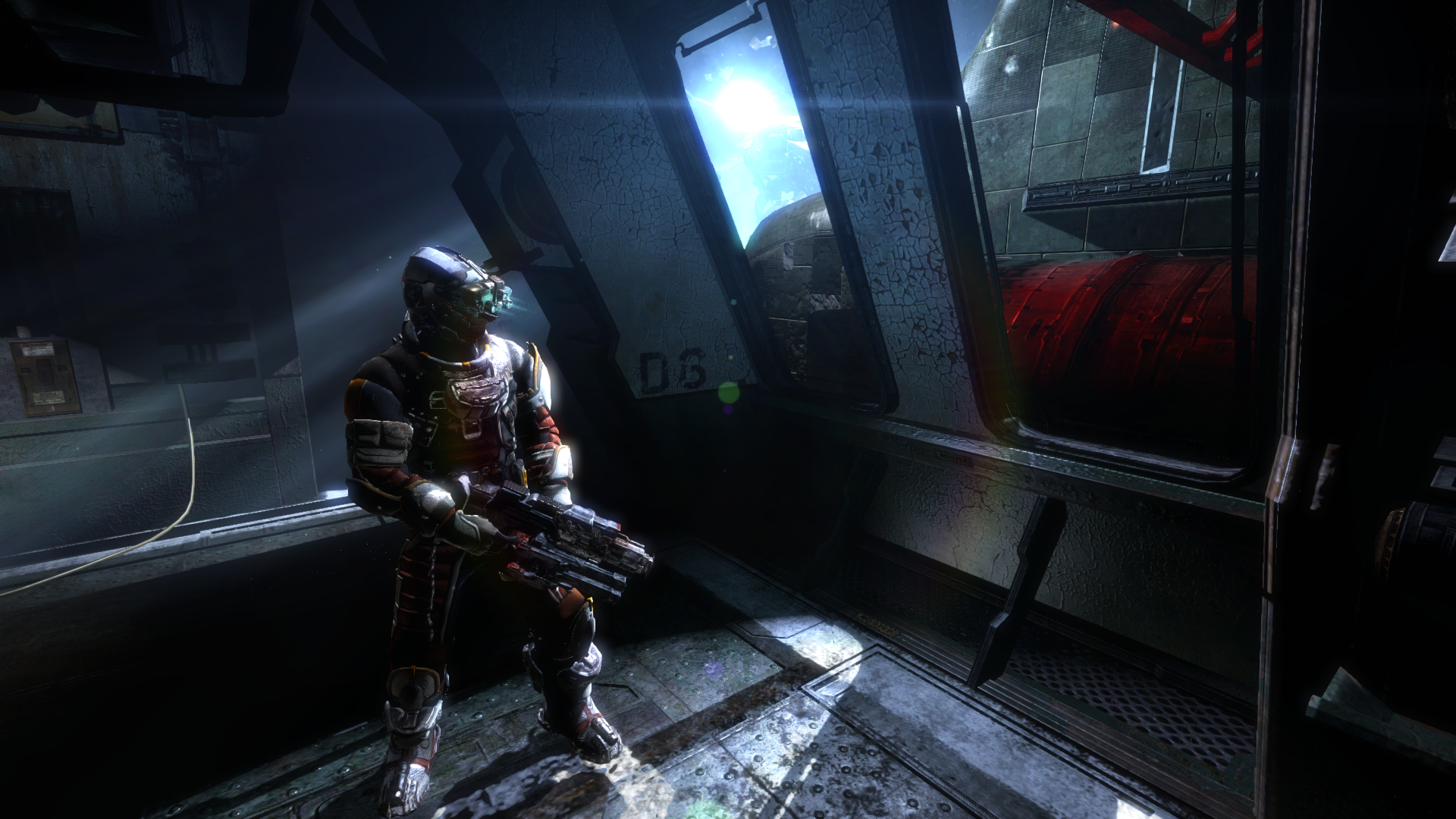
Even though a crafting system sounds interesting and cool, it kills engagement. When players don’t have to think about what guns to bring, what items to carry, or what order to engage enemies in, the game reduces its vocabulary. It becomes flat and boring.
Dead Space 3 has the vocabulary of a caveman’s poetry. Dead Space 1 and 2, comparatively, were the combined works of Shakespeare.
This isn’t the only problem, of course, but it is the biggest one. The level design in Dead Space 3, while still attractive, is dull, especially near the end of the game. The game’s spaces feel rushed, lacking the sense of detail and design that made Dead Space 2 so good. The levels are robbed of verticality, with the game spaces — and new enemies — establishing frequently repetitive encounters. Rather than change things up, the game feels repetitive. The save system is replaced with poor checkpointing. Regenerating enemies become so common that they become annoying rather than scary.
Co-op? Sure. Ice planets? Why not? Microtransactions? Probably didn’t pay for the cost it took to implement them, but thankfully, they’re buried in the menus. If EA wants to make another Dead Space game — and that cliffhanger at the end of the both the campaign and its DLC leaves the door open for one — then Dead Space needs to go back to speaking the dialect we know and love it for.
The crafting system doesn’t have to be a problem. Imagine a resource system that empowered you to craft individual improvements for your guns that fine-tune them to your play style. The game already features a similar system with the power nodes, so modifying weapons isn’t without precedent. Expanding that system to add more detail without reducing the decisions made during the actual gameplay would improve Dead Space, rather than subvert it the way the current crafting system does.
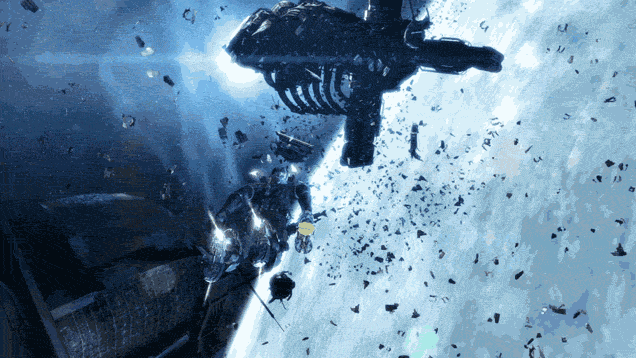
Despite missteps with the level design, pacing, and crafting, the series has given us some great games. I’d like to see a new entry to the series set in a living, breathing environment, like a space station — something that feels like a real place, rather than using the spoked wheel design of Dead Space 3. I’d like to see more enhancements to the existing system, rather than reductions, like what came with Dead Space 3.
In the ongoing conversation that is the Dead Space series, or any sequel, really, it’s important to remember: the perfect sequel is the same, but different. Dead Space 3, unfortunately, was just different.
Dead Space isn’t dead, fortunately: It’s a great series with an easily solvable problem.
This post has been updated since its original publication, and retimed in light of the discussion around a potential Dead Space reboot or remaster.
GB Burford is a freelance journalist and indie game developer who just can’t get enough of exploring why games work. You can reach him on Twitter at @ForgetAmnesia or on his blog. You can support him and even suggest games to write about over at his Patreon.
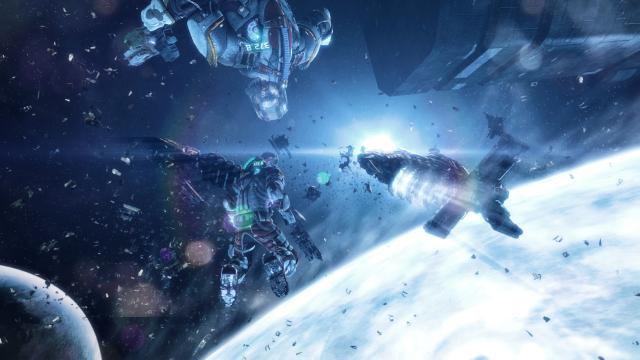
Comments
24 responses to “How The Dead Space Saga Lost Its Way”
How The Dead Space Saga Lost Its Way
Answer is EA. It’s always the answer.
Anyways I still need to play through Dead Space 3. Was thinking of recording a playthrough with someone else.
No doubt some suit came along with his focus group telling them that they could sell millions of more copies making oodles of dollars by implementing feature x y and z – these features just happen to totally kill what made the game special in the first place….
This is what happened when EA mess with the game development too much.
If dead space 3 was exactly the same as dead space 1 + co-op, it would sell millions.
Look at the Soul series (Demon souls, Dark souls 1+2), they are the same and yet, successful due to them keeping the core concept of the game. Developers need to understand that.
Look at Assassin’s Creed, hell look at CoD. All successful franchise remains successful as they hold on to the core mechanics that make the game what it is. (or you can argue it is a milking attempt). Regardless, developers need to take note, if they want to change something major, make a new franchise and not destroy the current one they have.
Ahhh but…. What are the criticisms of CoD, AC and even Souls… “It’s still the same recycled over”.
I loved 1 never finished 2 and own but never booted 3. I don’t blame them on making changes though, it should still be encouraged.
I do hope that Visceral come back with a new Dead Space game, or even a new franchise, but I can’t help but worry that they have been sucked into the vortex known as the Battlefield Annual Release Cycle, and may never make their way out of it again.
I thought it was the CoD annual release cycle? Those are the first games that come to my mind when such a cycle is mentioned, anyway…
Besides, we’ve seen all of three major dead space games, years apart from eachother; they buggered it up on the third, and can still redeem themselves. Not what I’d call sucked into an annual cycle, just lost their way.
No I was more thinking that Visceral may have been shifted in EA’s eyes to being a “b-team”, where they push off their secondary AAA releases. EA had Visceral develop Army of Two 2 (a franchise addition nobody asked for), and now they are doing Battlefield Hardline (a spin-off rather than a legit instalment in the BF franchise). I’m concerned it’ll be a cycle of DICE releasing a BF titles, then Visceral releases a follow-up to fill the gap while DICE work on the next proper sequel, similar to how Infinity Ward and Neversoft worked on CoD (before Neversoft got better at making CoD of course).
I honestly thought Dead Space 3 was much better than Dead Space 2. I certainly enjoyed it more than DS2.
Also, like the first two games, I played through the entirety of DS3 with just the Plasma Cutter, so I never got the sense of building a weapon that was too powerful and too good at everything.
I want to love dead space, but I just can’t.The propaganda era posters are just smack of ‘hey, you know those movies and novels that have this type of material woven into the context of their stories? well here is the same stuff just plastered around so now our story has depth too!’ I think the moment that killed it for me was getting to one part and the guy goes ‘I think I heard something…I think there’s something on the ship’ …so Isaac, who has just killed 5 terrifying aliens in literally the previous room to this one, just says nothing and leaves. o.O
I thoroughly enjoyed extraction, it’s a real gem! So sad that eurocom is gone because of one game being rushed through…
Yeah, Extraction was surprisingly good.
Yeah, I loved Extraction. Good times back when the Wii had few good games.
Co-op would have been fine, had they not had separate sections of the game walled off unless you played with a partner. Wandering through DS3 and coming across a locked door literally labelled “Co-op” is more than a little immersion-breaking. The gun crafting was just broken, though – and don’t get me started on the preorder weapons…
Although I have a fond place in my heart for the original Dead Space I’ve lost any real interest in the series basically because I know too much about the game now. See the reason why I find the first game compelling is because you are given nothing. All you know is that you are an engineer hired to fix the ship your girl friend is on and then you discover that there is an army of zombie space aliens on board with the sole intention of making your life difficult. But its more than that. You get the feeling that there is some greater conspiracy, happening in the background that you have been unfortunately swept up in, but you only have an inkling that this is the case and at the end of the day your just stuck in a haunted space house. That sense of being overwhelmed is what I found compelling about dead space and its story.
Of course in the later games Isaac starts to discover more about the conspiracy and we are given more of the story. The big problem with this is the story is bananas stupid and doesn’t make any sense! Sit down and think about the story for a second. It’s about the human race building a bunch of funny shaped rocks as they somehow generate unlimited power, but as a side effect they turn people into zombie space aliens. Ignoring the point that maybe humanity should just build like a million solar panels near stars as harnessing unlimited energy stars seems like the way to go, the story is brimming with unreasonably dumb people and genuinely non sensible plots. I’m going to list here a few aspects of the story that I find ridiculous.
A space religion which seems completely happy dappy about becoming zombie space aliens with out a single person in there religion who isn’t aye okay about that.
Sentient funny shaped rocks (or markers if you want to get technical).
The fact that planet cracking (a process of mining an entire planet) isn’t a sustainably practice for humanity. Seriously planets are big things! How could you not find a sufficient amount of resources for humanity by mining entire solar systems.
And the crown jewel of the idiot hat! There is a race of giant sentient flesh moons which seem to be the kings of the zombie space aliens.
So yeah sorry dead space, but I liked you better when I was battling who knows what is what felt like a giant tumble dryer.
Dead Space lost its way when they did Dead Space 2 and made it into an action game with horror elements rather than a survival horror. Incidentally the exact same thing that went wrong with Resident Evil. Which is interesting because Dead Space was clearly cut from the same cloth as Resident Evil 4.
Im trying to go from memory here, but I think it lost me because I couldn’t get any progress due to NOT having a “perfect” gun… it had micro transactions I think,, and I got stuck in the Tram sections being chased by that monster you cant kill. Never made it through and gave up eventually. Loved the first two, bought special editions, and will probably not do that again.
I’ve played Dead Space and Dead Space 3. They are just door opening simulators. You spend most of your time opening doors. If you like doors, and opening them, you’ll like the game.
There’s little more than hyperbole in this silly article, that’s the way Kotaku! What defines “not well recieved”? Is it an average score that’s generally fine for anyone not obsessed or expectant of absolute perfection like Dead Space 3, Mass Effect 3 and Dragon Age 2? Or is it the loudness of arbitrary and exaggerated bitchery on social media like Dead Space 3, Mass Effect 3 and Dragon Age 2? This article tells us what’s more important; the uneducated opinion of an angry ignorami. Seriously, these “what went wrong with…” articles are popping up everywhere now and all they consist of is an attemp to fling sh*t out into the world in the hopes that most of the criticisms are acknowledged by the large minority whose opinions are only fuelled by what others say on social media anyway. I mean how can anyone argue against this?! People who have never played CoD generalise it terribly, people who have no understanding of narrative clumsily attempted to critique Mass Effect 3 and now we’ve got Destiny; an episodic MMO shooter – which we all knew about from the beginning – and we’re complaining about the story not ending in the first chapter, pretending we know something but actually just pandering to arbitrary outrage. Please don’t pander to the arbitrary nature of the consumer Kotaku….
…anymore.
A good article, and very true. I still recall walking into the first area in dead space three and picking up a hundred bullets… One hundred, in one area… I don’t think I ever got that much at once in the entirety of dead space 1 or 2
Dead space 3 was great, i have no idea what this opinion article is talking about.
I never really thought the loot system in Dead Space 3 was horrible, in fact I rather enjoyed it. I’d tinker so much for different combos that it really was one of my favourite aspects. The problem with the system though was the preorder items and monetisation of upgrades that meant not every piece was created equal. I’m pretty sure I never switched from the core pieces of the preorder weapons as they were just so strong.
For me, the real letdown of Dead Space 3 was that it really just seemed like an action game. While Dead Space 2 had its set-piece moments it never really lost that feeling of isolation and dread. In Dead Space 3 even if you play through single-player, you never feel alone. You always run into your allies and the constant reappearance of Carver removes a lot of the fear of being alone.
Dead Space really seems like the Resident Evil series in a way.
Dead Space is like the original Resident Evil and sets the bar for the series.
Dead Space 2 is like Resident Evil 4. It changes up the system a tad, but for the better and keeps the series from being a stale formula.
Dead Space 3 is Resident Evil 5. It is too action-y for its own good and has forgone the sense of isolation and overwhelming odds for set-pieces and a constant friendly presence.
I wasn’t keen on the gun crafting system, it was “okay” and I think I used it a few times but with a game like Dead space being linear and not a huge open world RPG, I kinda just want a selection of guns that do the job and not sink more time into collecting mats for building things I could obtain during my journey.
Really hopeful for a sequel, DS3 explained a lot of the overarching story but it wasn’t what I was expecting…..at least it didn’t have the ending RAGE did…..
The action in DS3 just wasn’t the same as DS 1 and 2, but I still kind’ve enjoyed it and I did get some value out of crafting the “perfect gun” for my playstyle. I thought the additions to the lore with regard to the ultimate purpose of the markers were effective and creepy.
The increased power and ability did detract from the tone in places but I suspect I could have just ratcheted up the difficulty if I’d really felt I was missing out. But the main issue I had with the game was that the psychological and existential horror took a back seat to tiresome melodrama. The Isaac/Chloe/Who-gives-a-shit love triangle took up way too much of the story and absolutely none of it had to be there. The DLC was a massive step up and actually gave me hope for the series.
Those idiots in visceral can finally learn that horror can sell. Evil within, alien isolation and silent hills will prove this.
Generally agree, however I don’t think the weapons customisation is as bad as the author says. Iin Dead Space 1 & 2 I only ever used the Plasma Cutter and Ripper anyway.
Throughout the ending stages of DS2 and most of DS3, I found myself running through environments without taking the time to explore and take in the eery atmosphere. It’s usually because I know there is nothing to inspect or interact with that warrants interest.
A few basic methods to increase scariness IMO:
* Enemies spawn in different locations EVERY time you enter a room
* Sound design plays a massive importance to the game (Original sound effects)
*Character isn’t prepared for direct contact with threat, AKA creature will kill you nearly instantly if approached at close range
*Darkness/Fog/Anything above waist deep water/inclosed spaces (enemies can still get you)